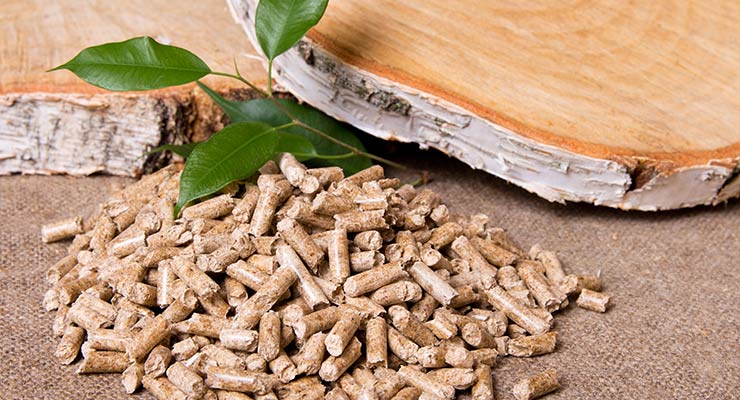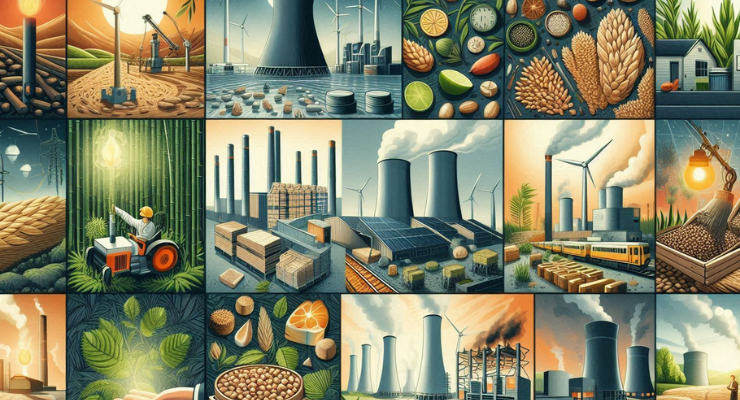Fast read
Biomass, derived from organic materials like wood waste, agricultural residues, and animal fats, is a renewable energy source. It generates energy through combustion, chemical conversion, and biofuel production. Biomass releases CO2 during energy conversion but absorbs it during plant growth, balancing emissions. It accounts for about 10% of global energy consumption, mainly for heat production.
Innovations in renewable energy technologies promise sustainable energy solutions without competing with food crops. Australia’s diverse bioenergy resources, including crop and forest residues, are underutilised, offering significant potential for future energy needs. Biomass is a key player in the transition to renewable energy.
Understanding Biomass: A Sustainable Energy Source
Bioenergy refers to the utilisation of organic materials, known as biomass, to generate energy. This renewable energy source plays a crucial role in producing electricity, heating applications, and even liquid fuels for transportation. Studying biomass helps us see its advantages and difficulties, making it an important part of sustainable energy plans.
What is Biomass?
Biomass consists of organic materials derived from plants and animals. These materials can be grown, collected, or harvested specifically for energy production. Common examples of biomass include wood waste, agricultural residues like bagasse (sugar cane residues), and animal fats.
When converting biomass into energy, it releases carbon dioxide (CO2) and small amounts of other greenhouse gases. However, the amount of CO2 absorbed during the growth of new biomass offsets this release, making it a renewable resource through photosynthesis
Conversion Processes: From Biomass to Energy
The conversion of biomass into usable energy involves several processes, each suited to different types of biomass and energy requirements.
- Combustion: The most traditional method, combustion involves burning solid biomass to produce heat. This heat can then be used directly for heating applications or to generate electricity through steam turbines.
- Chemical Conversion: This method breaks down biomass into fuels such as biogas or liquid biofuels. Biogas, primarily composed of methane and CO2, is produced through the anaerobic digestion of biomass. This process is commonly used in landfill sites, sewage treatment plants, and agricultural waste facilities.
- Biofuels: Liquid fuels like ethanol and biodiesel are produced through chemical conversion processes.
- First Generation: Produced from sugar and starch crops through fermentation and distillation, or from vegetable oils and animal fats through chemical conversion.
- Second Generation: Utilises non-edible fibrous or woody portions of plants, known as lignocellulosic material, and algae. These processes are still in the research, development, and demonstration stages.
- Third Generation: Focuses on integrated biorefineries that produce biofuels, electricity, and bioproducts. These technologies are currently in the research and development phase.
Global Biomass Resources
Bioenergy accounts for approximately 10% of the world’s primary energy consumption. The share of bioenergy is higher in non-OECD countries compared to OECD countries. Australia’s bioenergy contribution aligns with the OECD average at around 4%. The world primarily uses bioenergy for heat production, with smaller percentages allocated to electricity generation and transportation fuels.
Current bioenergy resources include residues from forestry and agriculture, organic waste streams, and dedicated biomass production from plantations and pastures.
Biomass Feedstocks and Their Uses
Forestry and agricultural residues, along with municipal waste, dominate the biomass feedstocks used for electricity and heat generation. In developing countries, traditional uses of fuel wood for heating and cooking remain prevalent, although these methods are often inefficient and pose health risks.
Bioenergy power generation is mainly used in the European Union, North America, Central and Eastern Europe, and Southeast Asia. In China, biogas production from livestock farms and agricultural residues is increasing. Developing nations in the sugar industry are also investing in power plants fueled by bagasse.

Biofuels in the Transportation Sector
A small portion of crops such as sugar, grain, and vegetable oil is used for biofuel production. There is a growing interest in biofuels, particularly in regions like Europe, Brazil, North America, Japan, China, and India. While conventional crops can be expanded for energy purposes, it is essential to balance land availability and food demand.
First-generation biofuels are often used in South America, sub-Saharan Africa, Europe, and the United States. These regions have easy access to energy crops for biofuel production. Second-generation biofuels, which utilise lignocellulosic crops, hold promise for sustainable energy solutions without competing with food crops.
Australia’s Biomass Landscape
Australia possesses a diverse range of bioenergy resources, including crop residues, forest residues, and various waste streams. The country is exploring the potential of second-generation technologies to utilise non-edible biomass feedstocks. Future feedstocks may include modified existing crops, new tree crops, and algae.
Several factors influence the feasibility of bioenergy resources, such as moisture content, resource location, and conversion processes. Some biomass production systems are good for the environment and can be sustained. Others struggle because they use high-input crops for biofuels. These high-input crops can cause challenges for the environment.
Economic and Environmental Considerations
The utilisation of biomass for energy depends on its economic viability compared to competing uses. Factors such as oil prices, environmental impacts, and the availability of alternative energy sources play crucial roles. Biofuels or electricity generation may utilize biomass based on its value relative to other markets. For example, industries may divert sawmill residues used for garden products or pulpwood for paper production to bioenergy if it proves to be a higher-value product.
In conclusion, biomass offers a versatile and renewable energy source that can significantly contribute to global energy needs. We can make our energy future more sustainable and strong by learning how to convert different materials into energy. This process is known as bioenergy.
Bioenergy is a renewable source of energy that can help reduce our reliance on fossil fuels. By utilising bioenergy, we can create a more environmentally friendly and reliable energy system.
In conclusion, biomass offers a versatile and renewable energy source that can significantly contribute to global energy needs. By understanding the various conversion processes, feedstocks, and market dynamics, we can harness the potential of bioenergy to create a more sustainable and resilient energy future.

